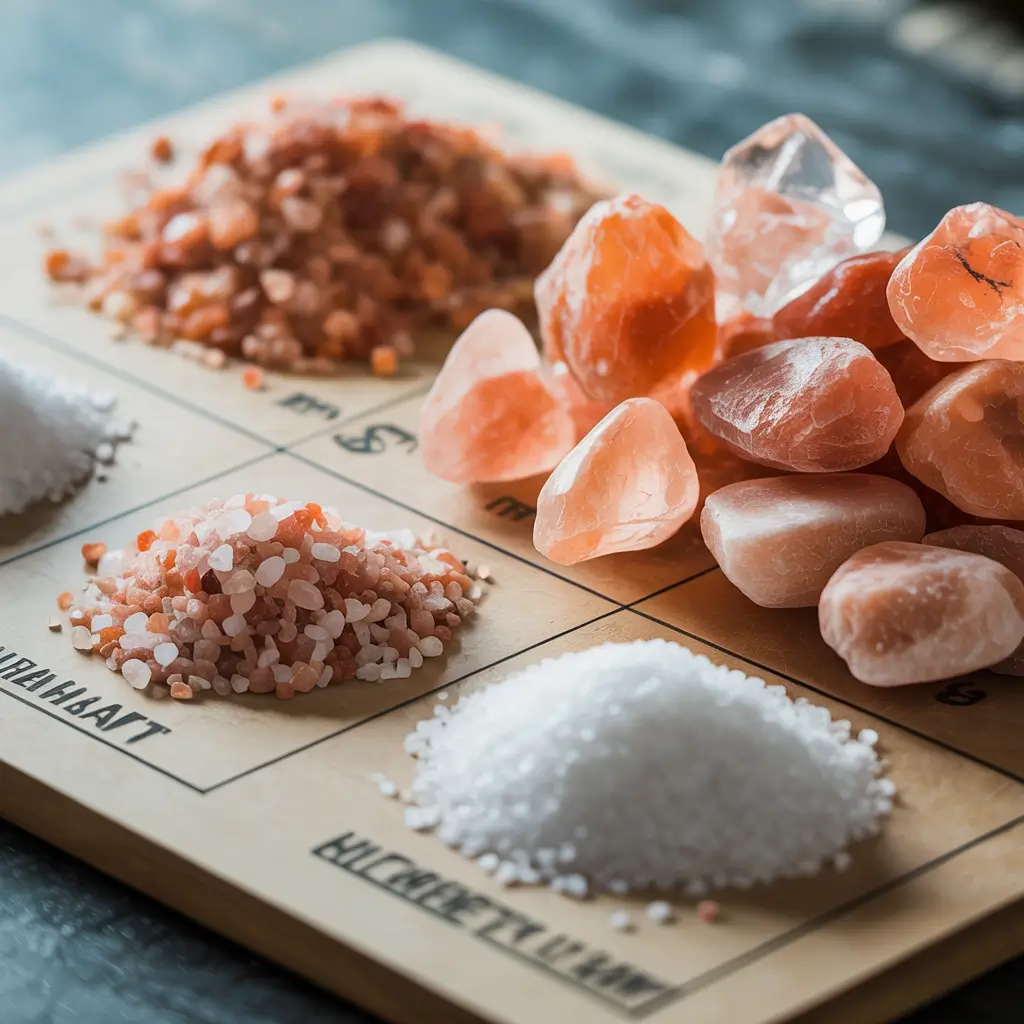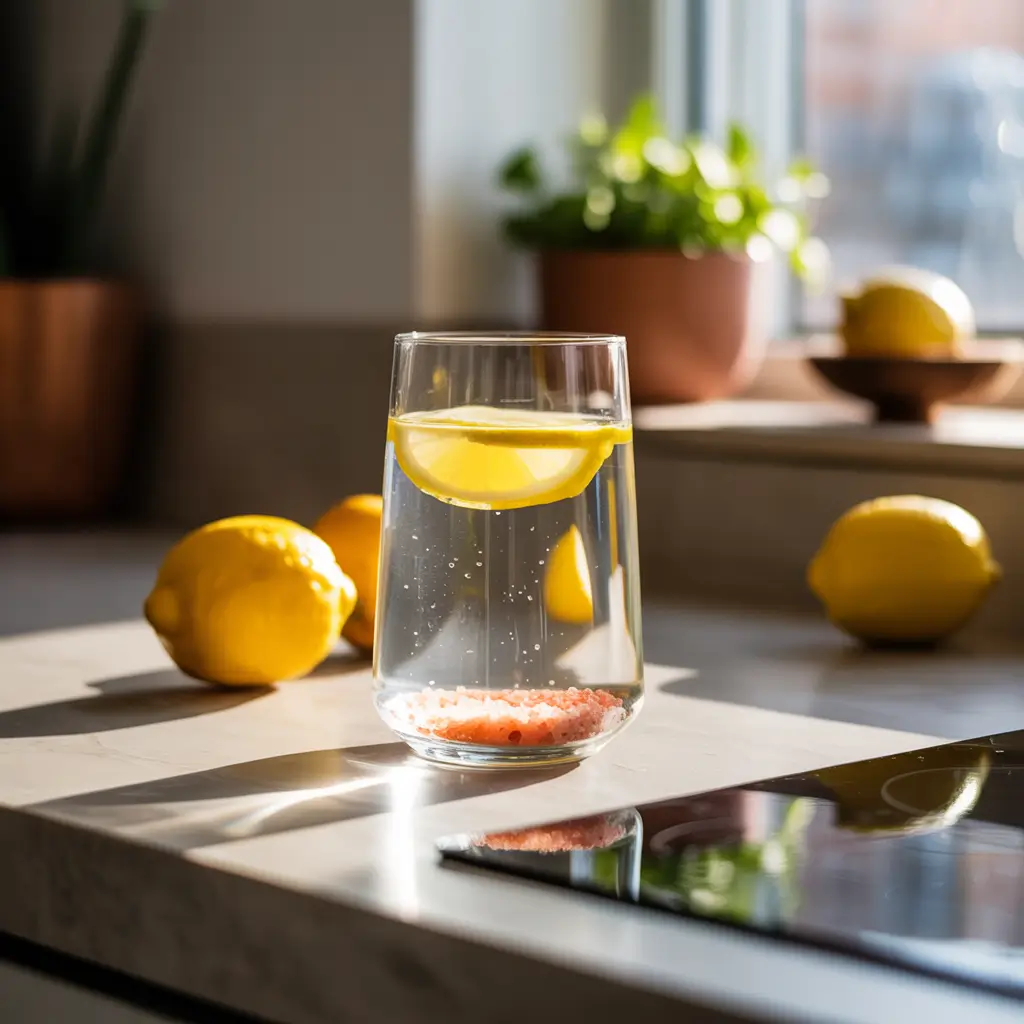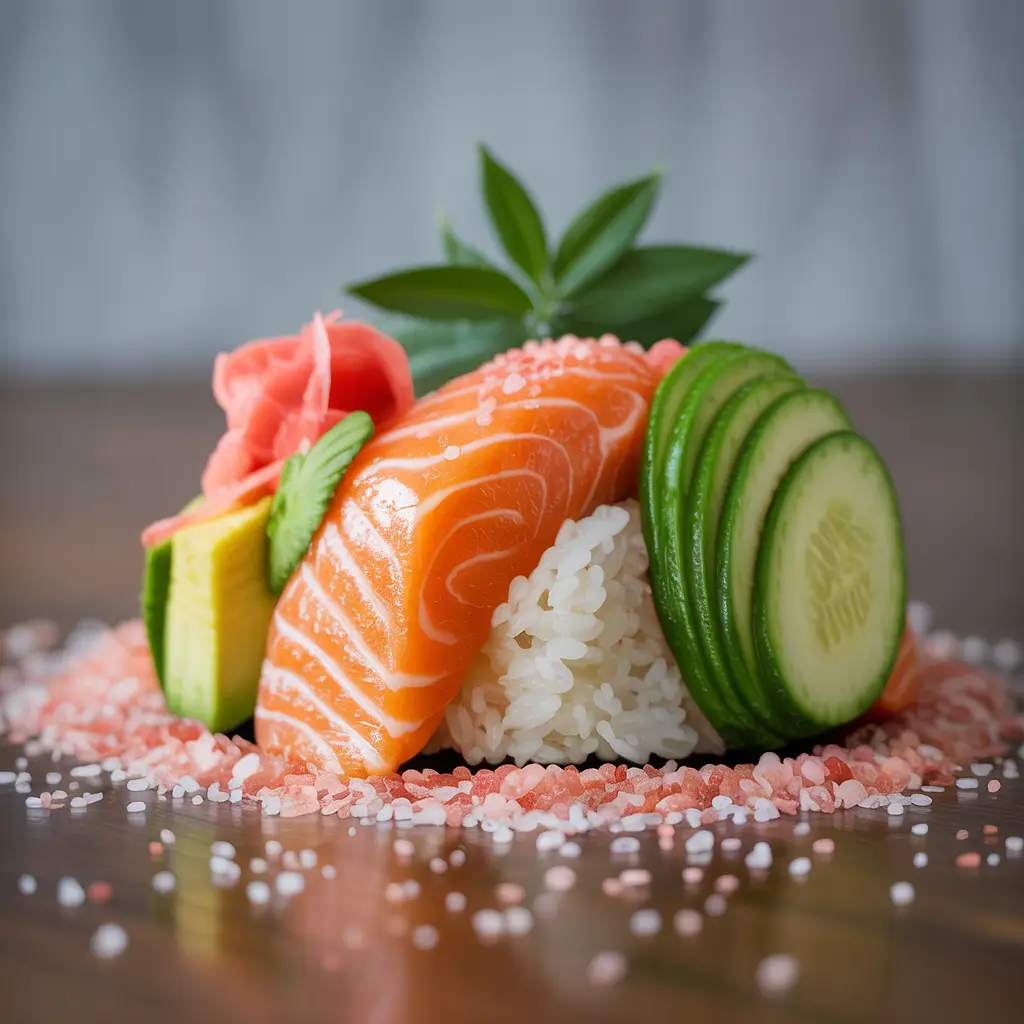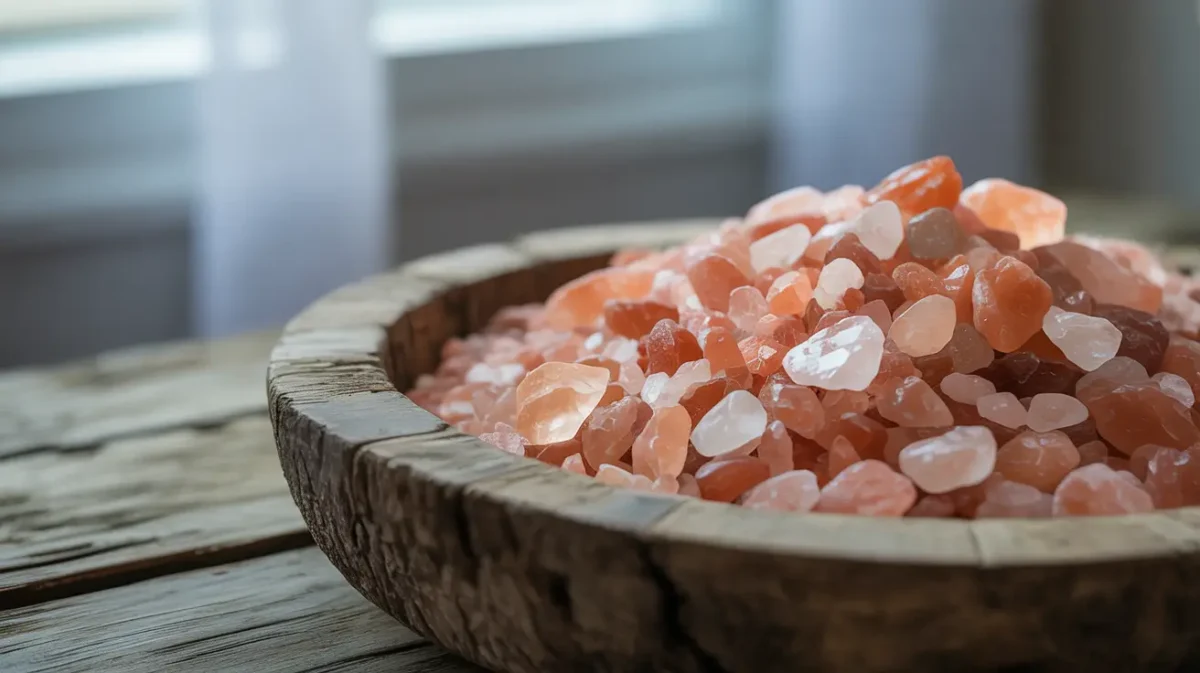foreword
The pink salt diet isn’t just a trend , it’s a flavorful way to balance wellness and taste. Hey there, food lovers! I’m Ruby, the flavor-obsessed chef behind HighTasty.com, where every recipe is crafted with love and bold flavors.
Here, you’ll discover everything from the Japanese pink salt diet recipe to tips inspired by celebrities like Oprah Winfrey’s pink salt diet. Whether you’re curious about the pink salt diet for men or wondering if the viral pink salt trick actually works for weight loss, you’re in the right place.
I also love connecting beyond recipes. For daily inspiration, check out my Pinterest boards filled with food ideas, or join me on Facebook to share your kitchen wins. And if you’re diving deeper into health and wellness, don’t miss insights from Zestolla.
So, grab your favorite ingredients, pull up a seat, and let’s explore how the pink salt diet can bring joy, health, and flavor straight to your table.
PrintPink Salt Diet – The Ultimate Guide to Benefits, Uses, and Recipes
The Pink Salt Diet is a growing wellness trend centered around Himalayan pink salt, praised for its natural mineral content and subtle flavor. From TikTok’s viral pink salt trick to celebrity favorites like Jennifer Aniston and Oprah Winfrey, this diet highlights pink salt’s potential role in hydration, digestion, and balance—though moderation remains key.
- Prep Time: 2 minutes
- Cook Time: 0 minutes
- Total Time: 2 minutes
- Yield: 1 serving 1x
- Category: Wellness Drink
- Method: No-Cook
- Cuisine: Wellness-Inspired
Ingredients
- 1 cup warm filtered water
- ¼ teaspoon Himalayan pink salt
- Juice of ½ lemon (optional)
- 1 teaspoon honey (optional)
Instructions
- Heat 1 cup of filtered water until warm.
- Add ¼ teaspoon of Himalayan pink salt.
- Optional: squeeze in the juice of half a lemon and stir in 1 teaspoon of honey.
- Mix well and drink first thing in the morning for hydration and electrolyte balance.
Notes
Pink salt is still salt—mainly sodium chloride. While it offers trace minerals and a natural flavor boost, too much can raise blood pressure or stress the kidneys. Use in moderation and consult a doctor if you have heart, kidney, or sodium-related health concerns.
Nutrition
- Serving Size: 1 cup
- Calories: 10
- Sugar: 2g
- Sodium: 380mg
- Fat: 0g
- Saturated Fat: 0g
- Unsaturated Fat: 0g
- Trans Fat: 0g
- Carbohydrates: 2g
- Fiber: 0g
- Protein: 0g
- Cholesterol: 0mg
Keywords: pink salt diet, Himalayan salt, pink salt trick, detox drink, TikTok diet, Oprah salt diet
Introduction to the Pink Salt Diet
What is the Pink Salt Diet?
The pink salt diet is gaining attention as more people look for natural, mineral-rich alternatives to refined table salt. At its core, this diet centers around Himalayan pink salt, a striking pink-hued crystal harvested from ancient sea beds in the Himalayan mountains. Unlike heavily processed table salt, pink salt contains more than 80 trace minerals, including potassium, calcium, and magnesium. These minerals not only give it a unique flavor but also contribute to its growing reputation as a wellness booster. Many people who follow the pink salt diet believe it supports hydration, balances electrolytes, and even aids digestion. With its vibrant color and subtle taste, pink salt has also become a culinary favorite in modern kitchens.
History and Origins of Himalayan Pink Salt
The story of the pink salt diet begins centuries ago in South Asia, where Himalayan salt was treasured for its purity and healing properties. It was traditionally used for food preservation, natural remedies, and cultural rituals. Over time, its use spread worldwide, attracting chefs, nutritionists, and wellness enthusiasts alike. In recent years, social media and celebrity endorsements have transformed it into a global trend. From the Japanese pink salt diet recipe to celebrity favorites like Oprah Winfrey’s salt routine, the pink salt diet continues to spark curiosity. Today, it stands as both a health movement and a flavorful choice for anyone eager to embrace natural living.
Nutritional Value of Himalayan Pink Salt

Mineral Content and Health Benefits
The pink salt diet is popular for its mineral-rich Himalayan salt, which retains over 80 trace minerals unlike refined table salt. These include potassium, magnesium, calcium, and iron—giving it a rosy color and potential health perks. Though present in small amounts, they’re linked to hydration, digestion, muscle function, and overall wellness, making pink salt feel like a “cleaner” seasoning choice.
Comparison with Table Salt and Sea Salt
When comparing Himalayan pink salt to table salt, the differences are clear. Table salt is heavily refined, often bleached, and mixed with anti-caking agents. While it usually contains added iodine, an essential nutrient, it lacks the variety of minerals found in pink salt. Sea salt, on the other hand, does share some similarities with pink salt but can be exposed to modern pollutants depending on its source. Pink salt, sourced from ancient sea beds preserved under rock layers, is considered purer and more natural. This distinction makes it appealing for anyone seeking a less processed seasoning choice. If you’re curious about unique ways to use it, don’t miss our Japanese pink salt trick recipe for a flavorful twist.
Health Benefits of the Pink Salt Diet
Supporting Hydration and Electrolyte Balance
One of the most talked-about benefits of the pink salt diet is its role in maintaining hydration and electrolyte balance. Unlike refined salt, Himalayan pink salt contains minerals like potassium, calcium, and magnesium, which naturally support the body’s fluid regulation. These minerals help replenish electrolytes lost through sweat, making pink salt a favorite among fitness enthusiasts. Some people even add a pinch of pink salt to their water to create a homemade electrolyte drink, claiming it prevents fatigue, headaches, and muscle cramps. While the scientific evidence is still being studied, its mineral content makes it a more natural alternative to sports drinks loaded with artificial additives.
Role in Metabolism and Weight Management
Another area where the pink salt diet shines is metabolism and weight management. The trace minerals found in Himalayan pink salt may support better nutrient absorption, which in turn can help the body process food more efficiently. Supporters of the diet also believe it promotes a balanced pH level in the body, which may reduce bloating and support digestion. While pink salt is not a magic solution for weight loss, incorporating it mindfully into meals can replace processed sodium sources and encourage healthier eating habits overall. Curious whether the viral hack actually delivers? Explore our guide on whether the pink salt trick works for weight loss to learn more.
Popular Pink Salt Diet Tricks & Trends

The TikTok Pink Salt Trick Explained
The pink salt diet skyrocketed in popularity after the so-called “pink salt trick” went viral on TikTok. This trend involves mixing Himalayan pink salt with warm water and sometimes lemon juice before drinking it first thing in the morning. Supporters claim it jumpstarts hydration, boosts metabolism, and helps flush out toxins. Others say it reduces bloating and curbs cravings, making it appealing for those seeking quick wellness hacks. While scientific evidence is limited, the mineral content of pink salt does provide electrolytes, which can aid hydration. However, experts caution against excessive use, since too much sodium can strain the kidneys and raise blood pressure. Like many trends, moderation is key.
Does the Pink Salt Trick Work for Weight Loss?
The pink salt trick has sparked debates among nutritionists and health enthusiasts. Some argue that the ritual promotes mindfulness around hydration and eating habits, indirectly supporting weight management. Others dismiss it as another internet fad with no substantial proof of fat-burning effects. What’s clear is that the ritual has made Himalayan pink salt a wellness staple in many households. For a deeper dive, don’t miss our full breakdown of the Japanese pink salt trick ingredients, where we explore how this recipe is prepared and what role each component plays.
Celebrity Influence on the Pink Salt Diet
Jennifer Aniston’s Pink Salt Routine
Celebrities often inspire wellness trends, and the pink salt diet is no exception. Jennifer Aniston has been linked to using Himalayan pink salt as part of her daily routine. According to reports, she sprinkles it into her meals as a healthier alternative to refined salt. Known for her dedication to balanced living, Aniston appreciates how pink salt can elevate flavor while also supporting hydration and mineral balance. Her endorsement has sparked curiosity among fans eager to replicate her habits, further fueling the diet’s mainstream appeal. While she doesn’t promote it as a miracle cure, her use highlights how simple ingredient swaps can make a difference in wellness-focused eating.
Oprah Winfrey and the Pink Salt Diet
Another household name associated with the pink salt diet is Oprah Winfrey. Her influence in the world of health and lifestyle trends has introduced millions to unique ways of eating. Oprah’s approach often combines mindful eating with natural ingredients, making Himalayan pink salt a natural fit. Her spotlight on pink salt has contributed to its surge in popularity, particularly among those searching for flavorful, less processed seasonings. If you’re curious about her perspective, check out our article on Oprah Winfrey’s pink salt diet to see how she incorporates it into her lifestyle.
Recipes & Practical Uses of Pink Salt in Diet

Japanese Pink Salt Diet Recipe
One of the most popular ways the pink salt diet is practiced is through Japanese-inspired recipes. These meals often combine Himalayan pink salt with light, nutrient-rich ingredients like fish, vegetables, and rice. The pink salt enhances flavors while keeping sodium levels more natural compared to refined table salt. Many diet followers prepare a morning drink with warm water, lemon juice, and a pinch of pink salt to kickstart digestion and hydration. Others prefer sprinkling it lightly over salads, soups, and grilled dishes. For a step-by-step guide, explore our detailed Japanese pink salt diet recipe, which shows how this simple seasoning can transform everyday meals into wellness-focused dishes.
Everyday Recipes Using Pink Salt
Beyond traditional recipes, pink salt can easily be integrated into daily cooking. It works well as a finishing touch on roasted vegetables, eggs, or even chocolate desserts, where its mineral notes balance sweetness. Some health enthusiasts also use pink salt blocks for cooking, giving meats and vegetables a subtle flavor while reducing the need for oils. The versatility of pink salt makes it suitable for both savory and sweet dishes, making the diet adaptable to many lifestyles. Curious about other creative ideas? Try our recipe for the pink salt diet trick, which highlights another fun way to use this trending seasoning.
Risks and Side Effects of Consuming Pink Salt
Recommended Daily Intake
While the pink salt diet is celebrated for its natural mineral content, it’s important to remember that pink salt is still salt. The American Heart Association recommends limiting sodium intake to about 2,300 milligrams per day, with an ideal goal of 1,500 milligrams for most adults. Even though Himalayan pink salt contains trace minerals, these are present in very small amounts that don’t outweigh the risks of excessive sodium. Too much pink salt can contribute to elevated blood pressure, water retention, and increased strain on the heart and kidneys. For best results, use it sparingly as a flavor enhancer rather than relying on it as a health supplement.
Possible Health Risks of Overconsumption
The pink salt diet should be approached with balance. Overconsumption may lead to health concerns such as hypertension, kidney issues, or fluid imbalance. People with preexisting conditions like heart disease or diabetes should consult a doctor before significantly increasing their salt intake. It’s also worth noting that some pink salt sold on the market can vary in purity and quality. Choosing authentic Himalayan pink salt is crucial to avoid contaminants or additives. For those curious about practical ways to use it without overdoing sodium, check out our article on the pink salt diet for men, which outlines safe and effective approaches.
FAQs About the Pink Salt Diet
Can I eat Himalayan pink salt every day?
Yes — in moderation. Himalayan pink salt is safe to consume daily, but it’s still salt, which is mainly sodium chloride. Overconsuming any salt, including pink salt, can lead to health risks like high blood pressure, kidney strain, and fluid retention. WebMD+2Health+2 Experts suggest staying under ~2,300 mg of sodium/day (some recommend 1,500 mg for those with hypertension or heart issues). Mayo Clinic News Network+1
What are the three ingredients in the pink salt trick on TikTok?
The “pink salt trick” often refers to a morning ritual that combines:
- Warm or room-temperature water
- A pinch of Himalayan pink salt
- Sometimes lemon juice (and occasionally honey)
Proponents claim it helps with hydration or digestion, but there’s no strong scientific evidence that it alone promotes weight loss. Prevention+2Ro+2
What is Jennifer Aniston’s salt diet?
Jennifer Aniston does not seem to follow a “pink salt diet” specifically. What is documented is that she follows the 80/20 rule with her food — eating mostly healthy (80%) and being flexible the rest of the time. She also tends to avoid extra salt or heavy salad dressings, preferring lighter seasoning like vinegar to flavor her meals. Business Insider
How to use Himalayan salt in diet?
Here are practical ways to include Himalayan pink salt in your diet:
- Use a small pinch in cooking (soups, stir-fries, roasted veggies) or as a finishing salt rather than dousing food.
- Optionally make a drink in the morning with water + a pinch of pink salt + lemon for flavor/hydration (but keep sodium low). Ro+1
- Replace processed or regular table salt with pink salt for less processed seasoning. But note: it does not replace the need for iodized salt if iodine intake is low. Healthline+1
Conclusion & Final Thoughts
Summary of Benefits and Best Practices
The pink salt diet has become one of today’s most talked-about wellness trends — and for good reason. Its natural mineral content, striking color, and versatile uses make it more than just a seasoning. From enhancing hydration to balancing electrolytes and adding depth to everyday meals, Himalayan pink salt has earned its place in kitchens worldwide. Still, like all sources of sodium, it should be used mindfully. A small pinch can go a long way in flavor and nutrition, while overuse can pose health risks. Moderation, balance, and variety remain the keys to a healthy approach.
Should You Try the Pink Salt Diet?
If you’re seeking a natural alternative to processed table salt, adding pink salt to your diet can be a simple and flavorful switch. It’s not a miracle cure or a shortcut to instant weight loss, but it can be part of a wholesome lifestyle when combined with balanced meals and active living. Whether you’re inspired by celebrity habits, viral TikTok tricks, or simply curious about global flavors, pink salt offers endless culinary possibilities. Looking for inspiration? Try our pink salt trick to lose weight for one creative way people are experimenting with this trend.
In the end, the pink salt diet is about more than salt it’s about making small, mindful choices that add joy and wellness to your table.



1 thought on “Pink Salt Diet – The Ultimate Guide to Benefits, Uses, and Recipes”
Comments are closed.